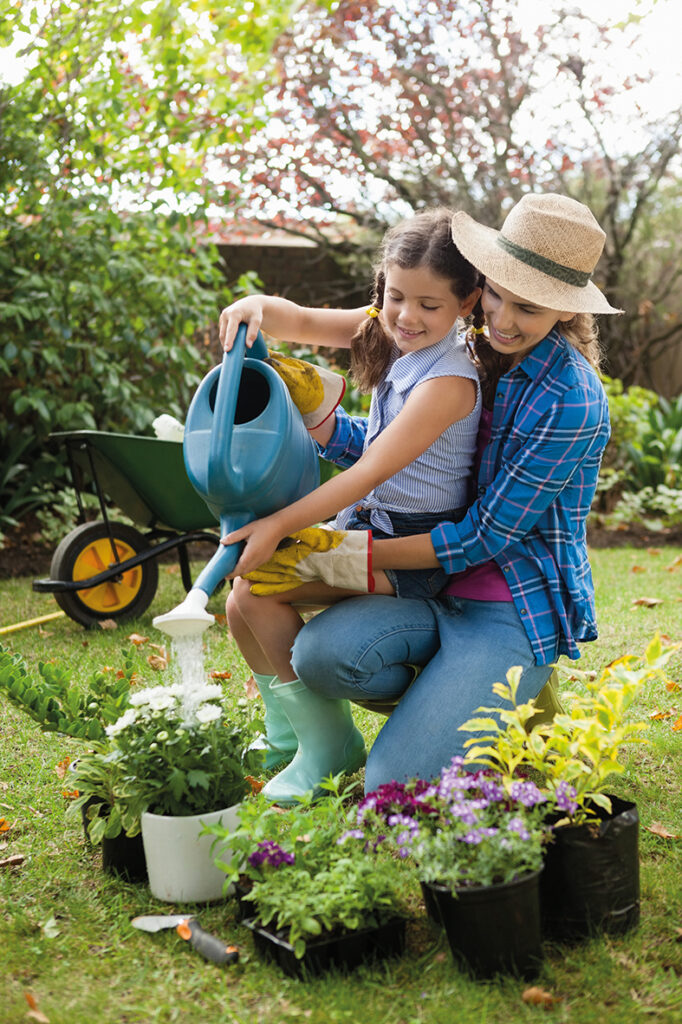Give gardening a go

Kirsty McLean is keen to encourage everyone to start gardening…
Getting started needn’t be complicated or expensive. It can help your physical and mental health and be an activity you can enjoy with others or alone. It can put fresh food on the table, provide a splash of colour or create a haven of relaxation. If you’re not sure where to begin, the best approach is starting with something achievable.
When you start to read about gardening, it can feel overwhelming, and people stop for fear of getting it wrong! There’s no doubt it’s a huge subject but that’s one of the reasons it’s so enjoyable, even well-seasoned experts never get to the bottom of it – every day’s a school day!
Think about what aspect of gardening appeals most. If you want to grow your own food, perhaps start with growing some mixed salad leaves in a raised bed or a trough planter. Container growing is easier to control and less an issue if it doesn’t quite go to plan. Herbs are another easy-grow plant, often drought tolerant and can be grown in and outdoors. They like full sun/good light and well-drained, moisture retentive, fertile soil. Make sure you keep mint and chives in their own pot or they will take over!
If it’s colour you crave, try planting a container with some bulbs. Put gravel or broken pots at the bottom over the drainage hole, add a multi-purpose compost/potting compost up to just under the rim. There are so many to choose from, both online or the local garden centre, with clear planting instructions on the packet. You can plant different bulbs in layers so you get a succession of flowering through the growing season. This is pretty fool proof.
If you want to encourage wildlife, designate an area of garden and don’t mow the grass there. Let it flower and seed. Short-grass plants like daisies and white clover get the chance to flower and longer grass produces a wider range of flowers including nectar-rich plants like oxeye daisy, field scabious and knapweed.
A basin dug into the ground with pebbles, stones and water will support the smallest insects and building a bug hotel by layering twigs and branches with some cut bamboo canes of different sizes for bees, will make a home for a wide diversity of wildlife. It’s a great project to do with the kids.
No space, then plant a container with some wild-flower turf or seed mix, or plant herbaceous flowering perennials instead such as Nepeta, Lavender, or Salvia which bees love.
If you want to grow veg, start by finding out what type and quality of soil you have. If you have light and sandy soil or heavy clay, dig in well-rotted manure, compost, leaf mould, composted bark, or mushroom compost to add bulk. In light soils this helps to hold moisture and nutrients and in clay soils it breaks up soil for better drainage. Prepare clay soils in autumn and leave open to be broken down by frosts and rain. Light sandy soils are best dug over in spring.
If that’s too strenuous, try a ‘no dig’ approach. This avoids disrupting the important micro-organisms, fungi and worms that help feed plant roots. If the plot is covered in weeds, kill them by applying anything that stops light penetration. This can take around six months or a year for stubborn weeds like bindweed, dock and brambles. When the ground is ready apply your bulky mulch (as outlined above) to approximately 15cm deep, on the surface. Don’t dig it in, but firm it down then sow your veggies. Add around 5cm of new mulch each year in autumn when crops are cleared or spring on beds where winter crops have been growing.
Happy gardening!